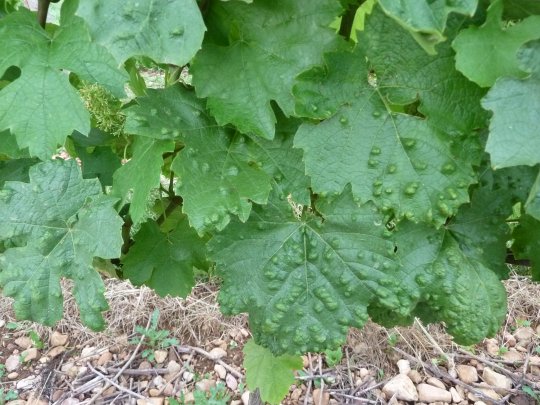What damage do blister mites cause in the vineyard?
In the spring, greenish and then reddish blister galls with a volume of 0.5 to 5 cm2 can be observed on the upper surface of young leaves, corresponding to a dense white or pinkish felting on the lower surface, caused by local hypertrophy of the epidermal hairs of the leaf.
As the galls age, the felting turns reddish brown. The mites (Eriophyes vitis) attack new leaves as the canes grow. The damage is usually limited and does not cause any reduction in yield. In the case of violent attacks in spring, blister mites can hinder the development of young shoots and cause flower abortion with a significant loss of harvest.


